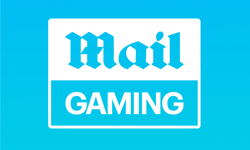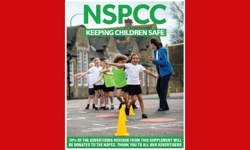Take a look at the current ereader hardware sales figures; in fact just look at the latest iPad sales figures. The clear picture is that the UK consumer is becoming very digital, very quickly, with mobile cutting right through the centre of it all. Yet how does all this translate into the real world of print publishing and subscription marketing right now?
Dovetail’s latest Subscriber Service Survey, which is now in its fifth year, has been building up more insights about how consumer magazine print subscribers are getting engaged with digital applications in six key areas:
1 Subscription acquisition
We asked subscribers if they could remember how they first took out their subscription: 14% could not remember, but of those who could, 25% said that it was through a digital channel.
Three markets stand out as being very digitally-skewed with over 30% of new subscriptions coming through a digital channel: Adult, Children’s and Puzzles. At the other extreme is TV Guides with only 8%.
2 Customer service
When a print subscriber has a query about their subscription service, increasingly they are using digital channels to make contact. Email now accounts for 32% of all customer service contacts and the self-service website for 33%, as letter and phone reduce in importance. Looking to the future, 22% of subscribers would find Facebook an attractive contact channel, followed by live chat (16%) and Twitter (11%). While demand for these new channels is not overwhelming, it is significant and growing and is an important “want” for particular pockets of the subscriber audience.
3 Publisher brand websites
For the first time, we asked about subscribers’ usage of the magazine’s own editorial brand-site. Overall, 29% of active subscribers use it regularly and 38% occasionally, totalling 67% who ever use the site, leaving a significant 33% who have never used it. Clearly, these figures vary massively from title to title and are a reflection of a number of factors, but the key ones are:
* How good and compelling the publisher brand-site actually is.
* How digitally savvy the audience is. Interestingly, the average age of site-users and non-users is very close - web usage is not just an “age thing”, but runs deeper and more complex than that.
A critically important finding is that the intention to renew the core print subscription is materially higher among brand-site users: engaging readers across a range of channels clearly binds them into the brand more strongly. Having missed the opportunity to charge for web access years ago, the publishing industry now has another opportunity to use web access to build the value of a bigger bundle of services; but more of that later.
4 General digital access
This year, 44% of subscribers claim to be “digitally enabled” – they have an electronic device on which they can read books, newspapers and magazines if they wanted to. A lower 34% are “digital media active” (they are actually using their device to eread), but it is still ebooks and enewspapers which are way ahead of emagazines – only 12% have used their device to read a digital magazine. Yet all these figures are significantly up year-on-year. The pace of change is fast.
The penetration levels of specific devices make fascinating reading (and remember this survey was polled before Christmas). The iPad, iPhone and Kindle all have similar penetration levels at 13-14% - the national population penetration figures were closer to 3% at the time of the survey. This underlines just how digitally-savvy magazine subscribers already are. The detailed title by title figures also illustrate just how different each device is in terms both of what it does and the type of person who owns it. The top ten magazines for iPad penetration is a predictable “early adopter” mix of male computing and stylish lifestyle titles, such as Wallpaper and World of Interiors. By contrast, the top ten magazines for Kindle penetration are older and more female-biased, with some traditional names among them, such as Woman & Home, Knit Today and Good Housekeeping. The iPhone list is different again. As ereader penetration grows, the digital market is breaking into its own distinct subsectors. There is no single, simple publisher strategy for “digital delivery”.
5 Digital magazine acceptance
As in last year’s survey, we asked all the print magazine subscribers, whether they would like a digital edition of their current print magazine. Respondents fell into three clear groups:
* DIGITAL ONLY (9% of the total; up by 2 percentage points year-on-year) who want a digital magazine instead of their print magazine. These readers have fully embraced the digital future and are leaving print behind. Yet they have much lower levels of engagement with the magazine brand, as measured by their intention to renew their subscription, than the other two groups.
* PRINT + DIGITAL BUNDLERS (25% of the total; up by 7 percentage points year-on-year) who want to have both the print and digital editions. At the moment, it is impossible to say how many of this group are simply in transition to becoming DIGITAL ONLY and how many see a print + digital bundle as their ideal magazine package, at least for the foreseeable future. What is clear is that the level of engagement is the highest among this group, backing up the findings about website usage – the more channels a reader uses, the stronger the link with the magazine brand.
* PRINT ONLY (66% of the total; down by 9 percentage points year-on-year) who are still turning their backs on digital and who see print as the “real thing”. Brand engagement is around the average for this group.
What lies behind this segmentation? The PRINT ONLY readers are generally very aware of their digital options, but simply prefer the print experience. The digital converts have been won over by the ease and speed of access of the electronic version and by the price (which is generally assumed to be cheaper than print), but not by the digital reading experience itself which still lags behind that of print. Backing this up, only 17% of digital magazine readers rate their current digital magazines as “excellent”; 52% say that they are “good” and 29% “average”. The reaction is one of solid, but rather luke-warm appreciation of the new channels, which need to be stronger creative products in order to grab the attention of the consumer.
What this all shows is that for most consumers, print remains the core channel – 91% of subscribers still want it as part of their reading package. Yet digital is quickly growing in importance and the market is changing rapidly into multi-channel delivery. What multi-channel delivers is a stronger level of engagement between the consumer and the magazine brand than either print-only or digital-only.
6 Emerging business models
Yet behind these broad consumer attitudes, what are the publisher business models which are emerging?
* Digital Acquisition. We asked respondents where they would start their search for a digital magazine. They are evenly split between three main routes: the publisher’s own website (27%), a broad-based search engine such as Google (25%) and an etail site such as Amazon, Apple Newsstand or WHSmith (23%). Having a broad base of acquisition sources is critical, and not being overly reliant on a commission-hungry partner such as Apple is very important. Also, publisher-direct sales offer something which the etailers cannot – a print + digital bundle.
* Digital Pricing. This whole area is currently being complicated by VAT and ABC issues, but it is clear that most consumers perceive a standalone digital edition to have less value than a standalone print edition, especially where one is the straight replica of the other. Yet publisher practice is currently changing from giving digital add-ons away free to print subscribers towards charging a premium for an enhanced print + digital package.
* Payment Options. We asked how “appealing” a range of payment options actually was for an electronic magazine. The traditional subscription, both in terms of the principle of an upfront payment and of annual frequency, remains the startpoint for many readers. Yet this is simply what they are used to for magazines: other payment options are also quite appealing.
We also asked what other media and entertainment services they paid for via a subscription to see whether there was a “subscription mentality” which runs through this group of consumers.
Print magazine subscribers have a solid - but not overwhelming – usage of the subscription model in other areas of their media consumption, with the massive exception of pay TV. This points to all kinds of promotional opportunities between magazine publishers and pay TV operators. The recent link-up between Virgin Media and Spotify underlines the potential for broader, cross-media entertainment packages.
Mapping a multi-channel world
The Subscriber Service Survey (SSS) does not provide all the answers that we would like to have as we negotiate this multi-channel world. Yet it does map out what the shape of this emerging world actually looks like, market by market and title by title. It is this granular perspective which is the real power of the whole SSS project as the single most important insight from the research is to show just how different each magazine sector actually is in terms of its acceptance of digital, the pace of change, which electronic devices are being used, what people are prepared to pay, and so on.
We are clearly in the middle of a period of transition where running everything in parallel seems to be the order of the day: print and digital; subscription and pay-as-you-go; bundled content packages and unbundled menus; and so on. What is also clear from the research is that engaging with our customers in as many different channels as possible (print + digital edition + website access) does two things: it offers more revenue opportunities and it binds the reader into the brand in a more engaged way.
The problem is that all this multi-channel activity is desperately resource-hungry. That is why we are working much more closely with our publisher clients and with a wide variety of app developers as partners in a digital future which none of us are big enough to shape on our own.
For a free copy of the full report go to www.dovetailservices.com
or for more background about the Subscriber Service Survey, please contact Ranj Begley at Dovetail or Jim Bilton at Wessenden Marketing.
ranj.begley@dovetailservices.com / 01795 414510
jim@wessenden.com / 01483 421690










